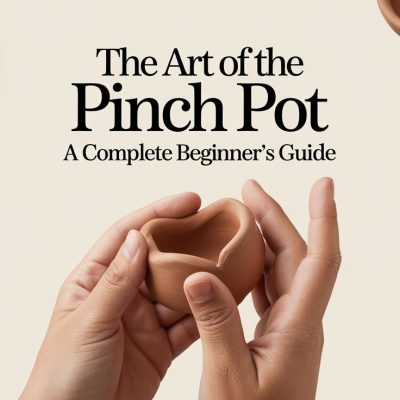Introduction
If you’ve ever played Dungeons & Dragons, you know that each adventure begins with a spark of mystery—and a disclaimer. The Tomb of Annihilation disclaimer is no different. It’s witty, darkly humorous, and sets the perfect tone for the deadly journey that awaits. But what does it really mean? Why is it there, and how does it affect your gameplay experience?
In this article, we’ll explore everything about the Tomb of Annihilation disclaimer—its purpose, tone, history, and hidden humor. Whether you’re a player stepping into the jungles of Chult for the first time or a Dungeon Master preparing to lead your party to their doom (or glory), this guide will give you all the insight you need.
Let’s dive in—if you dare.
Understanding the Tomb of Annihilation Disclaimer
At the start of Tomb of Annihilation, players encounter a humorous yet foreboding message. The disclaimer serves as both a warning and a welcome. It sets expectations—telling you this is no ordinary adventure. Death isn’t just possible here; it’s almost inevitable.
Think of it like a theme park ride sign that says:
“You must be this brave to enter.”
It’s a creative way for Wizards of the Coast to prepare players for what’s coming—chaos, danger, and unforgettable storytelling.
What Makes This Disclaimer So Unique?
Unlike the usual disclaimers in D&D books, which simply mention copyrights and trademarks, Tomb of Annihilation’s disclaimer reads like it came straight from the villain’s mouth. It’s witty, sarcastic, and even mocks the idea of player survival.
This uniqueness reflects the adventure’s personality—it’s not about playing it safe. It’s about challenging your creativity, luck, and teamwork.
The Dark Humor Behind the Message

The Tomb of Annihilation disclaimer uses dark comedy to immediately capture attention. It’s both funny and unsettling, much like the adventure itself.
For example, it might joke about players needing “a backup character” because their first one probably won’t make it out alive. This type of humor doesn’t just entertain—it prepares the players for the high stakes ahead.
It’s like a rollercoaster operator cheerfully saying,
“Buckle up! You might not come back the same!”
A Quick Look at Tomb of Annihilation
Before diving deeper, let’s recap what Tomb of Annihilation actually is.
It’s a Dungeons & Dragons 5th Edition campaign set in the deadly jungle continent of Chult. The story revolves around a mysterious Death Curse that prevents resurrection and slowly kills those who have been revived before.
Players must uncover the secret behind this curse, navigate dangerous lands, and ultimately face the Soulmonger, a device causing the mayhem.
It’s an adventure that tests not just your character’s strength—but your group’s wits and resilience.
The Jungle of Chult – Where the Adventure Begins
The setting of Chult plays a vital role in shaping the tone of the disclaimer. It’s wild, untamed, and full of lurking dangers—from undead hordes to dinosaurs.
When you read the disclaimer, it feels like the jungle itself is taunting you.
It whispers:
“Welcome, adventurer. Let’s see how long you last.”
The disclaimer and the world-building go hand in hand, making Chult feel alive and unpredictable.
How the Disclaimer Sets the Tone for the Campaign
A good disclaimer isn’t just about warning players—it’s about creating atmosphere. The Tomb of Annihilation disclaimer tells you upfront that this campaign isn’t for the faint-hearted.
It establishes:
-
High stakes – Death is real and final.
-
Clever humor – Laugh while you can.
-
Adventurous energy – Every decision could be your last.
In short, it primes your imagination before the first dice roll even happens.
What the Disclaimer Teaches Players

Beyond its humor, the disclaimer teaches players an important lesson: expect the unexpected.
It subtly encourages smart play, teamwork, and adaptability.
When players know that resurrection is impossible, every action suddenly matters. Every trap, every encounter, every choice—becomes a moment of real tension and excitement.
It transforms a simple game into an emotional, unforgettable experience.
How Dungeon Masters Can Use the Disclaimer Effectively
Dungeon Masters (DMs) can use the Tomb of Annihilation disclaimer as a storytelling tool.
Here’s how:
-
Set the mood: Read it dramatically before starting the session.
-
Foreshadow danger: Use it to remind players of the risks.
-
Build anticipation: Let it become part of the narrative.
Think of it as the opening crawl in Star Wars—it doesn’t just inform, it immerses.
Comparing Disclaimers Across D&D Modules
The Tomb of Annihilation disclaimer stands out among other D&D adventures. For instance:
-
Curse of Strahd leans on gothic horror.
-
Waterdeep: Dragon Heist emphasizes intrigue.
-
Icewind Dale: Rime of the Frostmaiden focuses on isolation.
But Tomb of Annihilation? It’s unapologetically deadly.
The disclaimer makes sure players know this isn’t a casual stroll—it’s survival of the cleverest.
The Cultural Impact of D&D Humor
D&D has always embraced humor, but Tomb of Annihilation took it a step further.
Its disclaimer became a fan-favorite meme, shared across Reddit threads and social media.
Players love quoting it because it represents the spirit of tabletop gaming: courage, laughter, and a bit of chaos.
It reminds everyone that even when your character dies horribly, it’s all part of the fun.
Why the Disclaimer Resonates with Fans
So, why do fans remember it so fondly?
Because it speaks directly to them. It acknowledges that D&D is unpredictable and that failure is often part of the story.
It’s like the game is saying, “You’re going to fail spectacularly—and love every minute of it.”
That honesty, combined with humor, makes the Tomb of Annihilation disclaimer timeless.
Common Misinterpretations of the Disclaimer

Some new players take the disclaimer too literally, thinking it’s a warning not to play.
But that’s not the case.
It’s more of an invitation than a warning—a playful nudge saying, “Brace yourself, hero.”
It’s meant to excite, not intimidate.
Understanding that nuance helps players appreciate the humor and approach the adventure with the right mindset.
Lessons from the Tomb of Annihilation Disclaimer
The biggest takeaway?
Tone matters.
This single paragraph shows how a few well-crafted sentences can set expectations, build immersion, and strengthen storytelling.
Writers, game designers, and storytellers can all learn from it:
-
Humor and horror can coexist.
-
Breaking the fourth wall can deepen immersion.
-
A disclaimer can be a powerful narrative device.
In essence, the Tomb of Annihilation disclaimer isn’t just a legal note—it’s part of the adventure itself.
FAQs
1. What is the Tomb of Annihilation disclaimer?
It’s a humorous message at the beginning of the Tomb of Annihilation campaign that warns players about the deadly nature of the adventure, using dark comedy to set the tone.
2. Why is the disclaimer important in D&D?
It helps set player expectations, introduces the mood of the story, and prepares everyone for a challenging, unpredictable campaign.
3. Who wrote the Tomb of Annihilation disclaimer?
It was written by the Wizards of the Coast creative team as part of the campaign’s introduction to blend humor with danger.
4. Is the Tomb of Annihilation really that deadly?
Yes! The campaign is known for its high difficulty level, deadly traps, and limited resurrection options—making every decision crucial.
5. Can I skip reading the disclaimer?
Technically yes, but you’d miss out on part of the game’s charm and personality. It’s a small but memorable piece of D&D history.
Conclusion
The Tomb of Annihilation disclaimer is more than just a few lines at the beginning of a rulebook—it’s a masterclass in tone setting.
It prepares you, warns you, and entertains you, all at once.
By blending humor, danger, and anticipation, it perfectly captures what makes Dungeons & Dragons such an enduring experience: the thrill of adventure, the joy of storytelling, and the camaraderie of facing impossible odds together.
So next time you open the book and read that infamous disclaimer, take a deep breath and smile—because the tomb awaits, and your fate is sealed.










